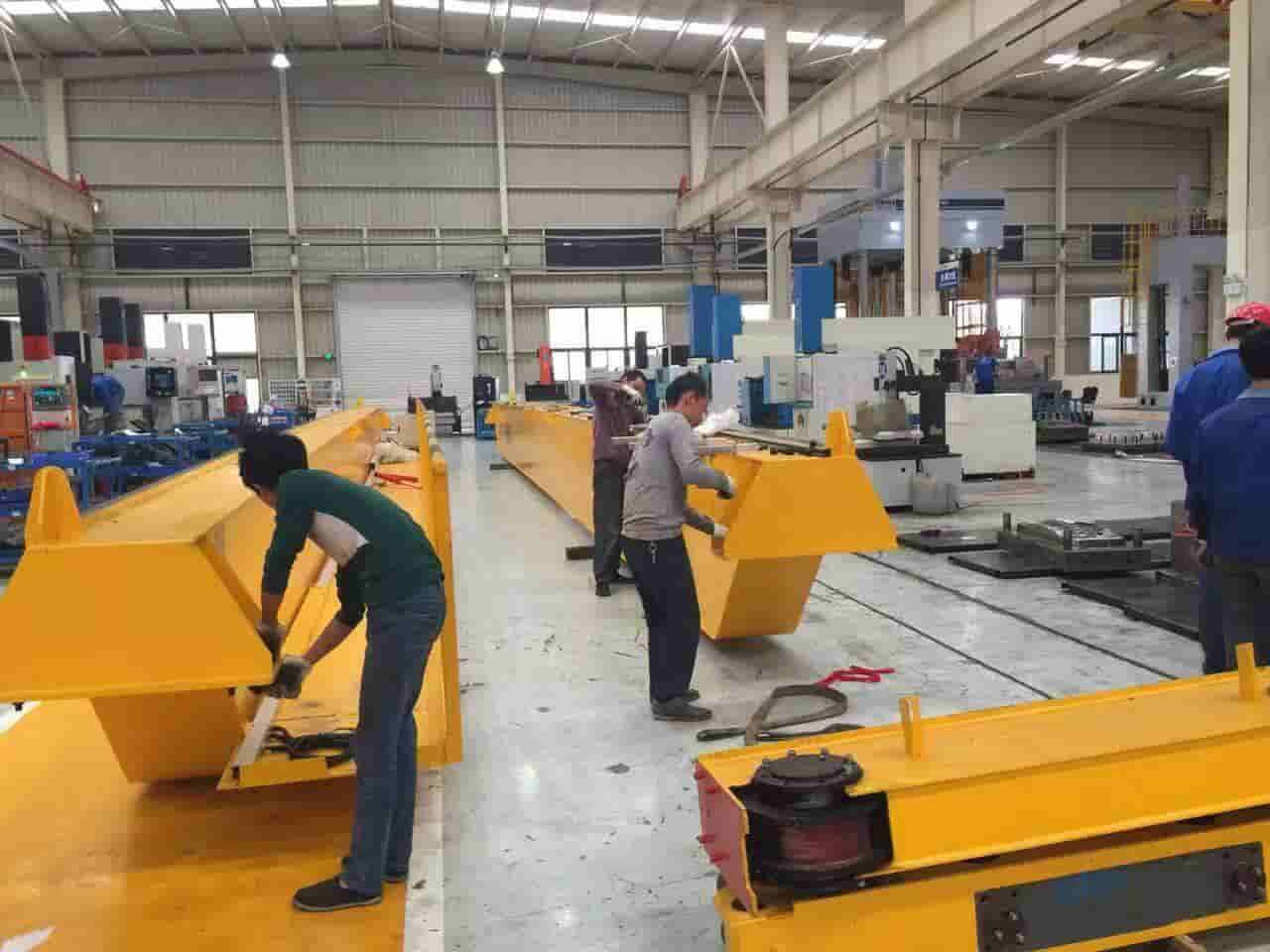There are many steels used in mechanical products, and the electric single beam crane is one of the representatives. When it comes to this, we have to mention the coating process of steels. The steels are protected against corrosion and rust by sandblasting, grinding and painting. The cost of mechanical equipment seen in people’s eyes is to decorate and beautify them.
Coating technology is generally divided into two parts, one is the appearance solution process before coating, and the other is the antirust primer coating process.
The appearance solution before coating is to prepare for the subsequent antirust primer coating of the crane. The quality of the subsequent antirust coating is determined by the appearance solution method and process quality. To put it simply, the appearance solution is the most important factor affecting the effective service life of crane antirust coating.
As for the part of anti rust primer coating, because of the shape and material characteristics of the crane, it is mostly sprayed, but it can be solved later. The spraying methods, spraying tools and spraying equipment used by major crane enterprises are different. Air assisted spray gun, portable electrostatic spray gun and water rotary spray booth are relatively advanced at present.

Bridge and gantry cranes are mostly made of steel, and the equipment surface is protected against corrosion by spraying paint. Proper paint category, spraying process and film thickness play an important role in the anti-corrosion of crane
Before painting, the surface of gantry crane shall be pretreated, generally in the form of sand blasting or shot blasting. Through pretreatment, the surface rust and dirt removal function shall be achieved, and the surface roughness shall meet the Sa2.5 standard of gb8923. The paints commonly used for crane coating mainly include alkyd paint, chlorinated rubber paint, epoxy zinc rich paint, polyurethane paint, etc. Alkyd paint and chlorinated rubber paint belong to single component paint, but alkyd paint belongs to relatively low-grade paint with low price. It is generally only applicable to unimportant steel structure products and is not recommended for cranes. Chlorinated rubber paint belongs to medium-grade paint, which can be used for indoor hoisting machinery.
Epoxy zinc rich paint is a good anti-corrosion primer. Generally speaking, responsible crane manufacturers will first apply a layer of epoxy zinc rich primer on the equipment surface, and then apply the finish paint. Polyurethane paint is a kind of top coat with good quality, with strong adhesion, water resistance, wear resistance and corrosion resistance. This kind of top coat should be used for outdoor cranes. The matching of primer and topcoat is also particular. For example, if epoxy zinc rich primer is applied, alkyd paint can not be used for the topcoat, otherwise the service life of the paint can only be two or three years at most, and chlorinated rubber paint or polyurethane paint with relatively good quality should be used.
The film thickness of the paint shall also meet the corresponding national standards. Generally speaking, the paint film thickness of bridge and gantry crane shall not be less than 80 ~ 120 μ m. Otherwise, the anti-corrosion can not meet the requirements, which has a great impact on the service life of the crane. A good crane paint should have an anti-corrosion life of at least ten years. If the user can’t determine the appropriate paint category with the manufacturer when purchasing the crane, but only pay attention to the price, it may pay a high price in a few years. Therefore, the paint is not insignificant for the gantry crane and should be paid enough attention.
Contact our crane specialists
Send us a message and we will get back to you as soon as possible.